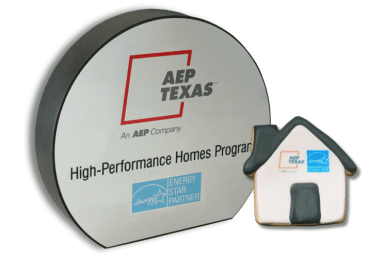Windows Are Walls Too—They Just Need Different Insulation
Just because you can see through windows doesn’t mean they’re not part of your walls. In fact, because it’s much harder to insulate windows effectively, your home’s windows can have an even bigger impact on your air conditioning costs. The size of the windows in a home, the number of windows, and whether or not they face directly into the sun have a direct impact on your home’s ability to be energy efficient. Here are some basic but important energy-saving window design facts you should consider.
Install Fewer and Smaller Windows
One of the biggest features of windows is their ability to allow daylight into your home. They also let you enjoy views of children playing and nature outside. Yet, having more windows may significantly increase how much money you pay for heating or cooling costs every year. You may therefore want to consider having fewer and/or smaller windows in your new home. For instance, if you reduce the total glazing on your home from 20% to 10%, you could reduce your cooling and heating costs by up to $500 every year.
Choose North-Facing Windows
Where your windows are located in your home will also impact how much energy you use to cool your home. Windows on the west side will add the greatest heat gain and thereby the highest cooling costs. North-facing windows receive the least amount of sun, so choose to install more windows on this side of your house. Carefully planning on which sides you add windows can cut your energy costs by $90 every year.
Shade Your Windows
Regular, low-efficiency windows will allow a lot of heat into your home. You can reduce this effect by shading your windows. Options include exterior overhangs, awnings, shutters, grills, roll-down shades, canopies, and shutters. These can often be motorized and controlled remotely and/or on timers to ensure the maximum benefit during the hottest hours of the day. Planting trees and shrubs outside of your windows can also provide a beautiful way to block sunshine from reaching your windows.
Interior shading can also reduce how much you need to use your air conditioner. Consider installing heavy drapes, shades, curtains, or blinds inside your home. These strategies are especially useful for west-facing windows. Most of these options are manually operated so you will need to remember to draw your blinds and curtains during daylight hours to prevent heat gain.
As you can see, there are many shading options. Depending on which you choose, you may be able to save up to $250 every year with strategic designs for your windows.
Compare Window Frame Construction
How well your windows resist heat transfer depends in part on what materials are used to construct the frames. Consider the following choices:
Aluminum frames: These are very strong and lightweight. Aluminum is also low maintenance. However, traditional metal frames transfer heat really quickly, which is something you don’t want in our climate in the Rio Grande Valley. If you need to choose aluminum for safety reasons, make sure you select a model that has a thermal break – this is a plastic strip that is installed outside and inside the frame and sash to prevent heat transfer.
Vinyl frames: Usually made of polyvinyl chloride (PVC), vinyl frames are very easy to care for. They require no painting and won’t rot like wood. They also transfer heat less quickly than metal frames. However, if you select this option, choose a model that is filled with insulation to increase their energy efficiency.
Wood frames: This type of window frame is better at insulating against heat transfer. However, wood requires a lot more maintenance. It can expand and contract in response to changes in weather, is susceptible to pests and rotting, and will require painting.
Add Energy-Saving Glass Features
The types of glass and how the glass is treated will impact how much energy you save, too. The following is a brief list of glazing features to consider and discuss with your builder.
Double panes: At the very least, make sure all of the windows in your new home are double paned. That means they will have two panes of glass separated by an air gap. This will cut your heat gains and losses by 50% and save you a lot on cooling costs.
Gas fills: Add a layer of insulating gas between your panes of glass. This can increase the window’s energy efficiency dramatically.
Tints and low-emissivity coating: Glass can be tinted to prevent certain types of light passing through. Similarly, a low-emissivity (low-e) coating can be added to windows to reduce heat gain and loss. Both options can lower cooling costs as well because they lower the U-Factor. When well-designed, these features will not impact your view.


Follow us on instagram for a daily dose of beautiful new homes in the Rio Grande Valley! Click here: @RGVNewHomes
© 2017 RGV New Homes Guide & Across Media Marketing, LLC.
Unauthorized use and/or duplication of this material without express and written permission from this site’s author and/or owner is strictly prohibited. Excerpts and links may be used, provided that full and clear credit is given to RGV New Homes Guide with appropriate and specific direction to the original content.





